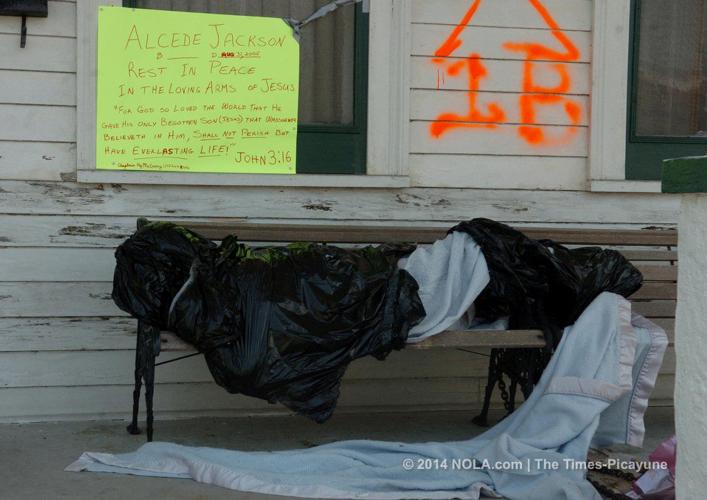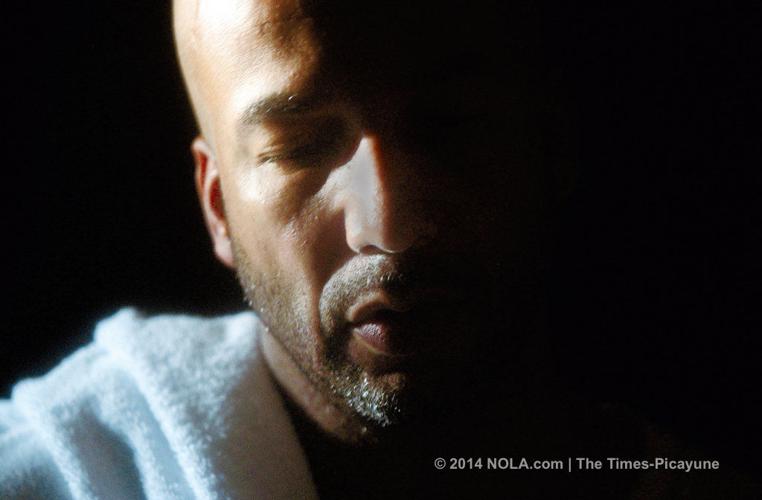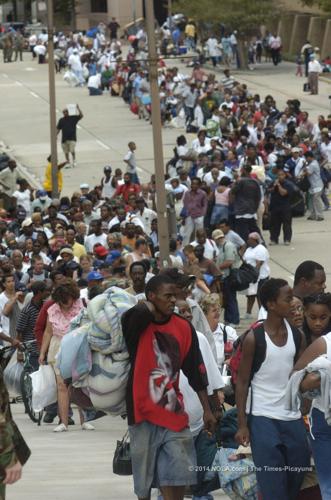WASHINGTON -- With the 10th anniversary of Hurricane Katrina nearing, officials estimate that federal spending related to the hurricane totals more than $120 billion -- about $76 billion of that going to Louisiana projects. That's almost three times the size of Louisiana's annual budget.
But that record-breaking federal response wasn't assured in the first terrible days after the storm struck, when failed federal levees left 80 percent of New Orleans under water. It certainly didn't look good when the No. 1 member of the House of Representatives, Speaker Dennis Hastert, R-Ill., told a hometown newspaper that it "looks like a lot of that place could be bulldozed." And when asked whether the government should spend billions of dollars to rebuild, he responded: "I don't know. That doesn't make sense to me."
Hastert soon apologized, and he joined Democratic and Republican congressional leaders, along with President George W. Bush, in agreeing to extraordinary federal aid. But as Sen. David Vitter, R-La., explained to then Sen. Mary Landrieu, D-La., on the Senate floor during debate on the first federal congressional responses to the disaster, Republican House leaders were unwilling to include the normal language allowing forgiveness of emergency disaster loans if cash flow proved a problem. Dropping the forgiveness language, Vitter said, was the only way to win House approval of legislation to exceed the usual $5 million cap on disaster loans, a cap that was totally insufficient given the degree of destruction.
It would take two bills, sponsored by Landrieu and backed by the entire Louisiana and Mississippi delegations in 2007 and 2013, to allow most of the loans to be written off. By 2014, almost $400 million in loans, or more than 95 percent of them, had been forgiven.
Search database of federal Katrina spending:
by Caspio
to load this Caspio
Landrieu said the recovery would have been slowed severely if the loans had not been forgiven, as they have for all other major U.S. disasters. "It would have been a huge hardship for our communities," Landrieu said.
As the anniversary nears, Louisiana lawmakers have given speeches about how metro New Orleans has recovered since the misery of Katrina, how FEMA is now better at amassing supplies in advance of a major disaster and how New Orleans levees have been rebuilt to protect against a "100 year hurricane," a storm with a 1 percent chance of sticking on any given year. And the Corps of Engineers' new levees have passed early tests, although experts point out that they aren't strong enough to guard against all flooding if another Katrina or stronger hurricane hits New Orleans.
Even the Small Business Administration, criticized for an overly burdensome emergency loan application process requiring financial records that many applicants had lost in the disaster, has expedited the process significantly.
"We're clearly better off in southeast Louisiana than we were the day before Katrina," Vitter said. "But we have more work to do, and we can't pause or slow down in any way. We must fight like our survival depends on it -- because it does.
"Coastal restoration and hurricane and flood protection aren't just important issues. They're matters of life or death, of survival for whole communities and ways of life."
Some Louisiana members of Congress can't help but recall how bad things were in the beginning. The federal government couldn't manage to get buses, water and food to the thousands of people stranded in the city, many in the Superdome or on rooftops above the flood waters.
"In the days after Katrina, there were Red Cross buses on the side of the highway that lined up from New Orleans all the way to Baton Rouge because the bus (drivers) thought it was too dangerous to go into New Orleans," said Rep. Cedric Richmond, D-New Orleans, in a recent House speech. "The Red Cross and the National Guard had 18 wheeelers and military trucks full of water that were designated to New Orleans, but there were on the side of the interstate opposite the buses because they thought it was too dangerous."
But Richmond, who was in the state Legislature when Katrina hit, said that when he and then-City Councilman Oliver Thomas drove into the city in a minivan loaded with bottles of water and "no security," all they encountered were "grateful people who were looking for some help, some water, some food and some direction as to how and when this recovery would start."
Landrieu said that she'll always be grateful for the late Sen. Robert Byrd. D-W.Va., who when Katrina hit was chair of the Senate Appropriations Committee. "I told him about the devastation and all the help we were going to need," Landrieu said. "He took my hand and said, 'We're going to help you.'"
There were lots of obstacles, and mistakes were made, as the state lobbied for unprecedented funding to meet an unprecedented disaster. Landrieu and Vitter initially asked for too much, according to some Senate colleagues, drawing up a $250 billion package prepared with major input from lobbyists who stuffed a wish list with years of local needs and wants.
Landrieu said efforts to get more emergency loans forgiven weren't helped when the Legislature voted in 2008 for substantial tax cuts, making it harder to sell the argument that hard times persisted. Bobby Jindal, a U.S. House member when Katrina struck, was governor by then, and he supported the tax cuts, after initially expressing concern about the fiscal effect.
House Majority Whip Steve Scalise, R-Jefferson, said it was the people back home, determined to rebuild, who ultimately persuaded a sometimes skeptical Congress and George W. Bush administration to help.
"I know I saw firsthand the strength, the resiliency, of the people back at a time not long after the storm hit when there were people questioning whether or not the city of New Orleans would be rebuilt or should be rebuilt," said Scalise, who succeeded Jindal as the 1st District congressman after Katrina. "But that didn't last long before you saw the nation come together and make a commitment."
Federal agencies, too, have gotten better, officials insist.
"Today, FEMA has the authority necessary to lean forward and leverage the entire emergency management team in response and recovery efforts," FEMA Administrator Craig Fugate said. "This team includes not only government but also the private sector, non-profits and citizens themselves. We support survivors, and this holistic approach emphasizes the importance of working as a team to prevent, protect against, respond to, recover from, and mitigate all hazards.
Among the improvements cited by Fugate and other FEMA officials:
- Since 2005, FEMA gained statutory authority to surge resources to states, Native American tribes and territories ahead of a disaster. This authority expedites FEMA's ability to respond to disasters if and when a state, tribe or territory requests support and a disaster is declared by the President, Fugate said.






























































































